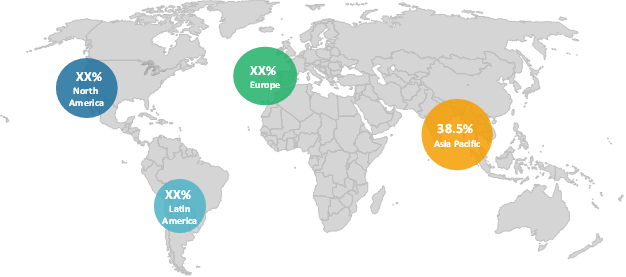Fish Products Market – Insights
Fish products are consumed all over the world as it is one of the major sources of high quality proteins. According to the World Health Organization (WHO), more than one billion people depend on fish and fish products as their primary source of proteins. Fish is processed into various food and non-food products. Fish products are segmented into fish oil, fish meal, and others. The consumption of fish products is increasing globally owing to various benefits of these products. In addition to being a rich source of proteins, fish products also contain iodine and zinc, which has led to an increase in consumption of these product. Countries such as Portugal and Japan are witnessing an increase in the consumption of ready-to-eat and processed fish products. The main application of fish products are food, feed, pharmaceuticals and others.
The global fish market was pegged at 177.70 million tons in 2018 and is expected to exhibit a CAGR of 3.2% in terms of volume over the forecast period (2019 – 2027), and expected to reach 228.25 million tons by 2027.
Figure 1. Global Fish Products Market Share (%), By Region, 2018

To learn more about this report, Download Free Sample
Source: Coherent Market Insights, 2017-18
Asia Pacific held the largest market share of 38.5% by volume in the global fish products market in 2018. This is attributed to increasing population which is propelling growth of the fish products market in this region. For instance, according to the United Nations report published in June 2019, Indian population is likely to grow at a faster pace, adding 273 million people by 2050. India is also projected to overtake China as the most populous country in the world by 2027.
Asia Pacific is the fastest growing region in the global fish products market owing to increasing demand from countries such as China and India. According to the World Health Organization, major countries from Asia Pacific have exhibited a double digit volume growth in the aquaculture market.
Among product type, fish oil segment accounted for a volume share of 81.5% in the global fish product market in 2018. For instance, according to the International Fishmeal and Fish Oil Organization, fish oil is one of the main sources of omega-3 fatty acids, EPA and DHA and its use in fish products ensures a protein healthy product for consumption.
In terms of application, food segment is expected to witness the fastest growth during the forecast period (2019-2027) due to higher demand for fermented fish products. According to National Research Council (US), countries in Asia Pacific are inclined towards using fermented fish products, as fermented fish products can overcome the perishable nature of these products. Consumers are attracted towards such products owing to characteristics of the products such as aroma, texture, and flavor.
In developed economies, higher priced fish products such as tuna, salmon, shrimp, and prawns are mainly exported. Moreover, fisheries are also engaged in diversifying their product range by expanding their presence in the aquaculture sector.
According to the food and agricultural organization (U.S), the country contributing to highest growth of the global fish product market is Peru, and the output of fish oil and fish meal in Peru rose from 735,000 tons in 2017 to 141,000 tons in 2018. In Peru, in the two fishing seasons, the total allowable catch accounted for 5.42 million tons.
In addition to this, during 2018, the double digit increase in production of fishmeal was also observed in countries such as Chile and the U.S., accounting for 371,800 and 342,500 tons, respectively.
70% of the fishmeal and fish oil products are derived from captured whole fish, and the rest from by-products of aquaculture. Moreover, the percentage of by-products would increase owing to its increased availability.
The non-tariff trade barriers play a major role in determining market access for fish and fishery products. Strategic business decisions with regards to export of unprocessed fish products are taken after considering the tariffs. The major barrier in increasing the trade exports among emerging economies is the lack of adherence to safety and quality related import requirements.
Major player’s operating in the fish products market include Omega Protein Corporation, FMC Corporation, Corpesca S.A., TripleNine Group A/S, Colpex International, FF Skagen A/S, Pesquera Diamante S.A., Marvesa Holding N.V, TASA, American Marine Ingredients, Croda Inc., GC Rieber Oils, and Pelagia.
Share
Share
Missing comfort of reading report in your local language? Find your preferred language :
Transform your Strategy with Exclusive Trending Reports :
Frequently Asked Questions
Select a License Type
Joining thousands of companies around the world committed to making the Excellent Business Solutions.
View All Our Clients